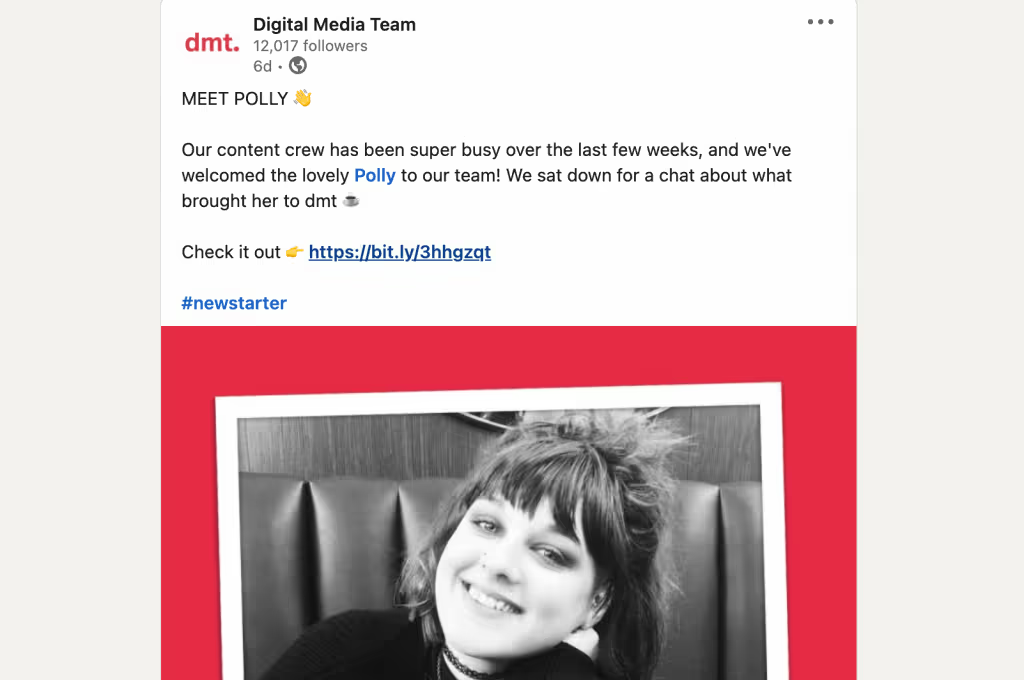What comes to mind when you hear the term ‘dark social’? Witches sharing spells on TikTok? Goths on Instagram? Satanist groups on Facebook?
Nope, none of those things. However, Satanists on social media would be a hella cool topic for a blog. Hah, HELL-a. Geddit?
Anyways, let’s dive straight into some dark social, shall we?

What Is ‘Dark Social’?
Coined by journalist Alexis Madrigal in 2012, the term dark social, or dark traffic, refers to the sharing of online content through private messaging platforms, emails, and texts.
Have you ever read an interesting article and decided to share it with a friend via Facebook Messenger? That’s an example of dark social.
Usually, when a person arrives on a website, the company can track precisely how and where that visitor found them. This is because of the referrer data.
Let’s use an example. Let’s say you visit DMT’s LinkedIn page and decide that you want to read this blog about a very dashing, very intelligent-looking young lady. You click on the blog’s link and are taken to the website, right?

If you look at the URL, there is a meta-tag which tells DMT that you found this link from LinkedIn:
‘https://www.digitalmediateam.co.uk/employee-spotlight-content-team-polly/?utm_source=social&utm_medium=linkedin&utm_campaign=dmt’
This type of metadata or referral data grants a company vital info about what kind of platforms are best for social spread and bringing traffic to their website.
But with the private sharing linked to dark traffic, the person essentially arrives on a company website seemingly out of thin air. No referrer data. Nada.
Their presence confuses the heck out of web analytics software, as the traffic comes up as ‘direct’ or ‘typed/bookmarked’. Essentially, the software believes that the visitor typed the entire URL directly into the browser in order to reach the site.
However, it’s FAR more likely that someone got a DM from a pal sending them a link. Especially considering that many URLs look like someone fell asleep on the keyboard.
Dark social occurs because of the privacy regulations of online messaging platforms. Conversations over private social channels – such as Whatsapp, Facebook Messenger, G-chat, etc. – are encrypted. So the source of website traffic is invisible and digital marketers are left entirely in the dark.
What Does This Mean?
Well, first and foremost, dark traffic has an impact on how much digital data is actually available to be analysed. For the number-crunchers and data wizards of the marketing world, dark sharing of content creates a bit of a mess when it comes to analytics reports.
The information gathered from web analytics helps marketers better understand customer behaviour. Knowing about the customer’s habit helps marketers optimise their strategy for obtaining better conversion rates and a better social spread.
But, dark social is an ever-rising phenomenon of the social media age. Whilst numbers are difficult to pin down due to the ever-increasing rate of dark social traffic, some studies suggest that around 80% of all online referrals are dark. Wowza.
But, not all hope is lost for our number nerds. Learning how to measure dark social traffic is possible, and it could even come with benefits.
What Can You Do About Dark Social?
Measure It
It doesn’t matter if 5% of your content is shared through dark social or 75%; you should definitely measure it.
Create a ‘dark’ segment on your web analytic software and look at your ‘direct’ traffic. If you find incredibly long URLs, it’s safe to assume that those come from dark sharing and that an individual did not type out that full link.
Whilst this step doesn’t uncover any specifics about where this visitor came from, it still allows you to count your dark social traffic.
Another step would be to embed big, obvious share buttons on your site for all the dark social channels, like WhatsApp, Facebook Messenger, etc.

That way, you can encourage people to share using those instead of copying and pasting the link, meaning you can track the dark traffic more easily.
Finally, there are many tools – such as ShareThis or GetSocial.io – that will allow you to track and analyse the dark side of your social traffic in much more detail.
Focus On Your Content
Whilst dark traffic is far from ideal for marketing professionals, it does highlight the importance and necessity for good content. As Madrigal himself claims, ‘the only real way to optimise social spread is in the nature of the content itself’.
In other words, the main priority for any business should be to make sure the content being put out onto socials is of high quality. If people enjoy it, they will share it. Publicly AND secretly.
Looking for more ways to optimise your content? Check out our blog on how to organically grow your socials through quality content.
Embrace It
At first, dark social seems like a bit of a web analyst-nightmare, but in reality, it’s just another part of social media culture that marketers have to adapt to.
There are even some benefits to it. For instance, did you know that 46% of consumers aged 55 or over share ONLY through dark social? That means that dark social is actually a great tool to connect with these unique, harder to reach demographics.
See? Dark social may actually be an untapped source of marketing potential.
Contact us via our contact page and find out more about our paid social, PPC, design and content services.
















.svg)